| Reports of visits to Japan of POWs |
Former Australian POWs visit Japan
at the third invitation of the Japanese Government
2012-10-01/08
| the Commonwealth War Cemetery/Friendship Meeting |
| the Minister of Foreign Affairs | the Omori camp and Yokosuka | Niigata | Yamaguchi |
| Kobe | Osaka | Kyoto |
Four former prisoners-of-war (POWs) and four accompanying family members visited Japan from October 1st to 8th, 2012. This is the third program that the Japanese government has run for former Australian POWs. Two of them were forced to work in Singapore or at the Burma-Thai railway as POWs, and the others were interned in China or the Philippines as civilian POWs.
This time was the first time for the former civilian POWs to be invited to Japan. This program, which started in the 2010 fiscal year, had been broadcasted a lot in Australia. Mr. Begley, who was a civilian POW, read an article about the program and wrote a letter to the Japanese Embassy in Canberra: I am a civilian POW. I was interned when I was nine and had terrible experiences. Why doesnft the Japanese government invite people like me, as a victim of the war? This letter made former civilian POWs to be invited.
No one spent in Japan during the war time so they didnft visit the camp site this time. However, they received a warm welcome from primary school students, university students and local people, and had an enriching experience. They visited atomic-bombed Hiroshima and fostered friendship with local people and children, which seemed impressive for them.
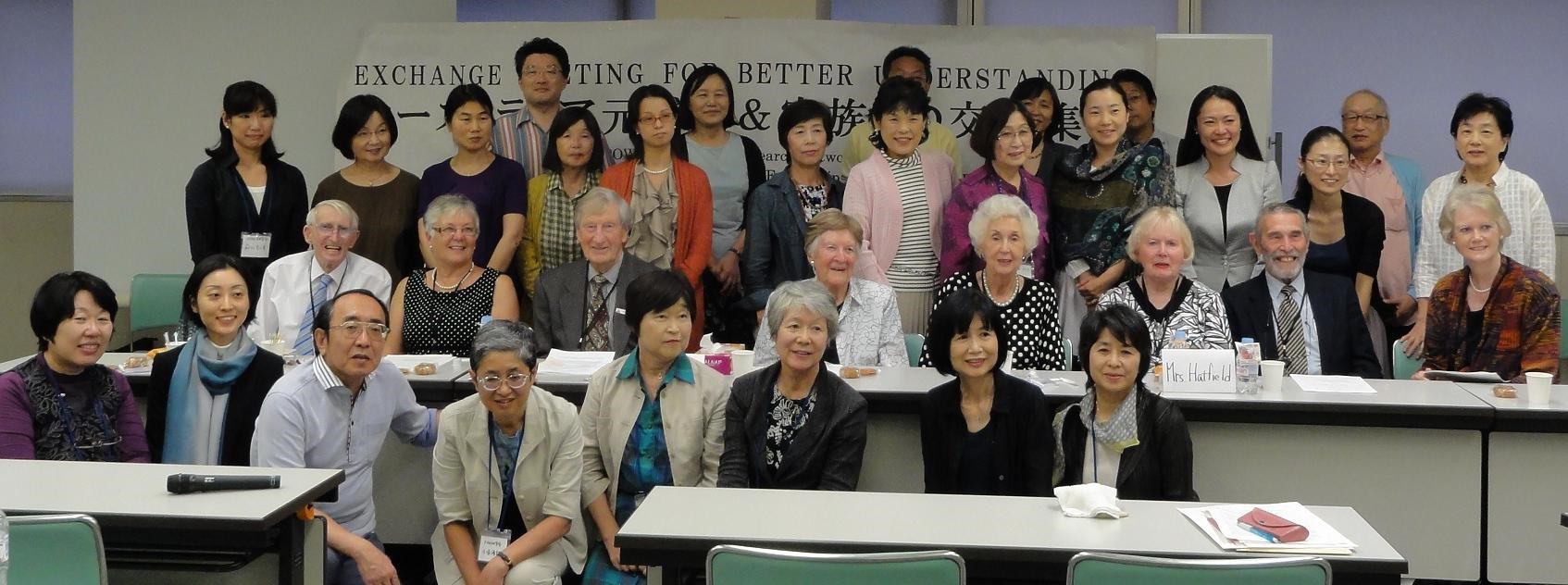 |
Description of the participants
|
Mr. William H. Schmitt (94) Ex-civilian POW. Lives in South Australia. He became a POW in Java in March 1942, was sent to Singapore in the following year, was interned in Changi camp, and worked to build the airport. He suffered from dysentery, other diseases and hunger. When he returned home, he only weighed 42 kilograms. Accompanied by his daughter, Ms. Susan Allard (age 65) |
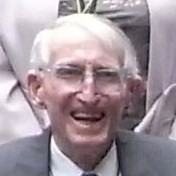
|
|
Mr. Colin Hamley (90) Ex-POW. Lives in Victoria. He became a POW in Java in March 1942, was sent to Burma-Thai railway via Singapore, and moved from one camp to another. He went through indescribable experiences. The loss of his older brother, then 22 years of age, at the Burma-Thai railway left him traumatized. Accompanied by his wife, Mrs. Valerie Jean Hamley (age 84) |
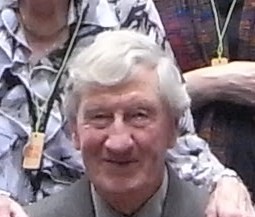
|
|
Ms. Elsa Francis Hatfield (88) Ex-civilian POW. Lives in Victoria. She grew up in Shanghai. On her way to Australia by herself, she was interned in the Philippines in December 1942. She was 18 years old. Released by the US army in February 1945, she came to Japan as a member of BCOF. She got married to a member of the Force and lived in Kure, Hiroshima prefecture. Accompanied by her sister, Ms. June Patricia Martin. (age 79) Ms. Martin was also interned in Shanghai. |
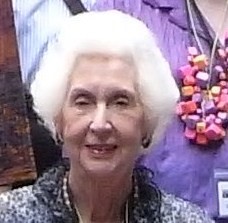
|
|
Mr. Colin Neil Begley (79) Ex-civilian POW. Lives in Queensland. He was brought up in China by his parents working for the Salvation Army. When he was at the boarding school in Tientsin (then nine years of age) with his sister and brother, the Pacific War broke out. Being unable to contact their parents in Hong Kong, children were taken in by their acquaintance in Beijing. They were reunited with their parents in Shanghai in the early 1943 and they were interned in the civilian internment camp in Yangzhou for 2 and a half years till September, 1945. Accompanied by his wife, Mrs. Belinda April Begley (age 62) |
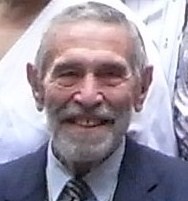
|
Schedule
| 1 Oct. (Mon) | Arrive at Narita airport |
| 2 Oct. (Tue) | Visit a shrine, a primary school and the Australian Embassy in Tokyo |
| 3 Oct. (Wed) | Pay a courtesy visit with the Foreign Minister Gemba |
| 4 Oct. (Thu) | Visit the Commonwealth War Cemetery in Yokoyama and participate in a meeting with citizens in Tokyo |
| 5 Oct. (Fri) | Individual visits to Hiroshima, Okayama, Shizuoka etc |
| 6 Oct. (Sat) | Morning: Individual regional visits Morning: Individual regional visit. Afternoon: Travel to Kyoto |
| 7 Oct. (Sun) | Visit Ryozen Kannon Temple, sightseeing in Kyoto |
| 8 Oct. (Mon) | Depart from Kansai International airport |
October 2 (Tues): Visit to a shrine and a primary school in Tokyo
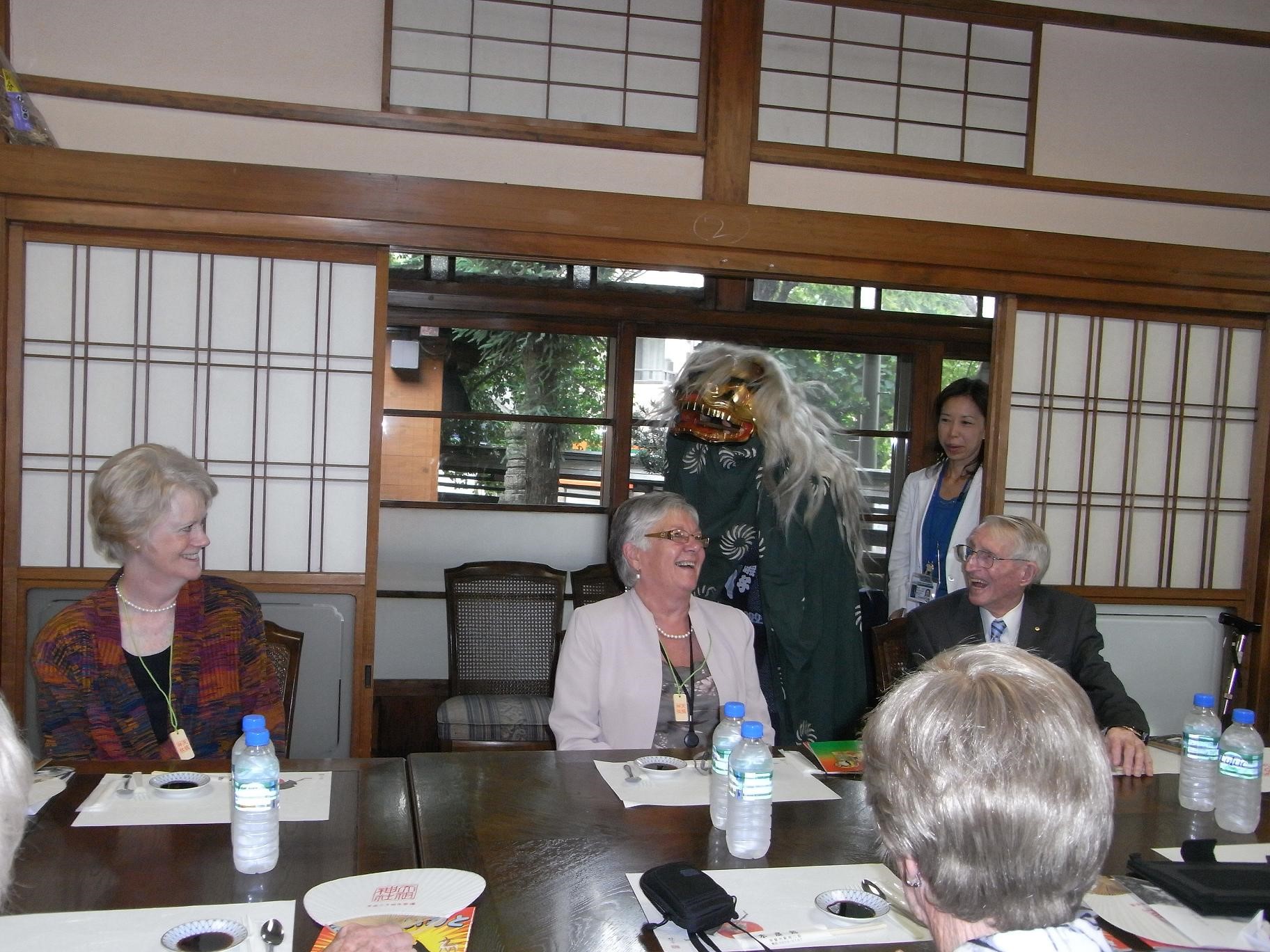 |
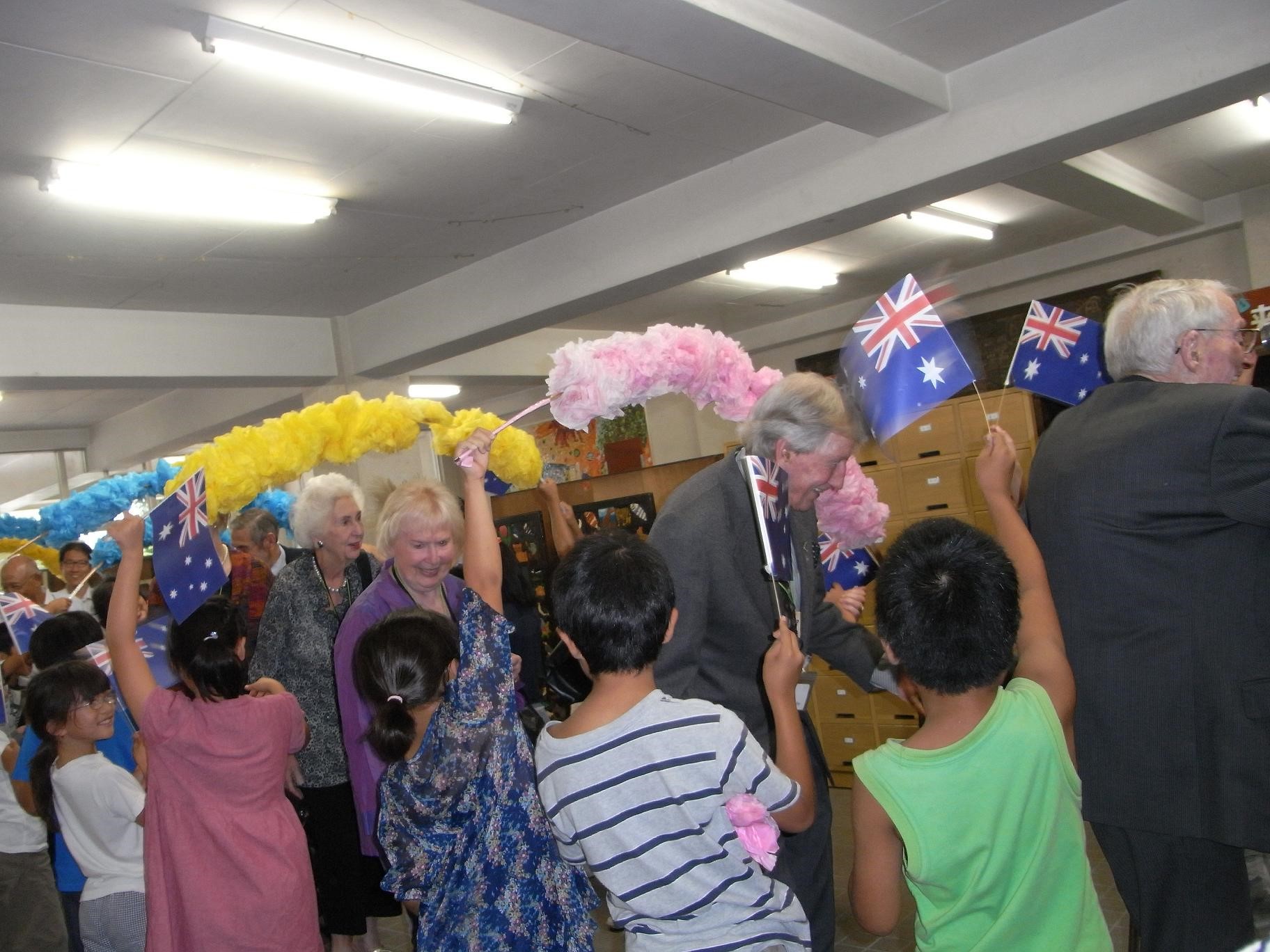 |
They visited a shrine in Itabashi ward and experienced Japanese culture. At the primary school, they were very much welcomed by children and observed their school lunch.
October 3 (Wed):
A courtesy visit with Koichiro Gemba, the Minister for Foreign Affairs
Details on the Ministry of Foreign Affairs website (Japanese): >>Link
(Summary) The group paid a courtesy call on Mr. Koichiro Gemba, Minister for Foreign Affairs. Minister showed Japan's feelings of deep remorse and heartfelt apology for the tremendous damage and suffering inflicted on many people during the war, including former Australian prisoners of war. Minister said to the Australian delegation that he hopes this visit will help their reconciliation with Japan and contribute to friendship between the two countries. Mr. William H. Schmitt said, on behalf of the Australian delegation, that his experience was in the past and the post-war Australia-Japan relationship had been amicable in terms of trades, and it was delightful that the reconciliation was on the progress. Opinions were exchanged in a cordial atmosphere.
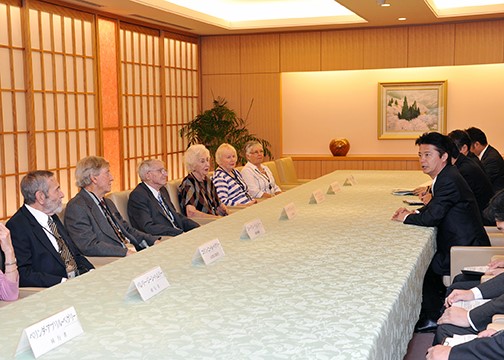 |
|
| (Photo courtesy of MOFA) |
October 4 (Thurs) morning:
Visit to the Commonwealth War Cemetery in Yokoyama
On a fair day under the blue sky, a memorial service hosted by the Australian Embassy was held with attendance of the vice-ambassador, a military attache and the chief of Oceania Division, Ministry for Foreign Affairs of Japan. Each of the former POWs offered a wreath under the cross with steady steps. Ms. Hatfield visited her son's grave at the post-war section (He was born while she had been stationed in Kure and passed away soon after). The rest found their comrades' graves at the Australian section. They seemed very emotional. After the ceremony, they enjoyed morning tea that was warm-heartedly prepared by the Embassy.
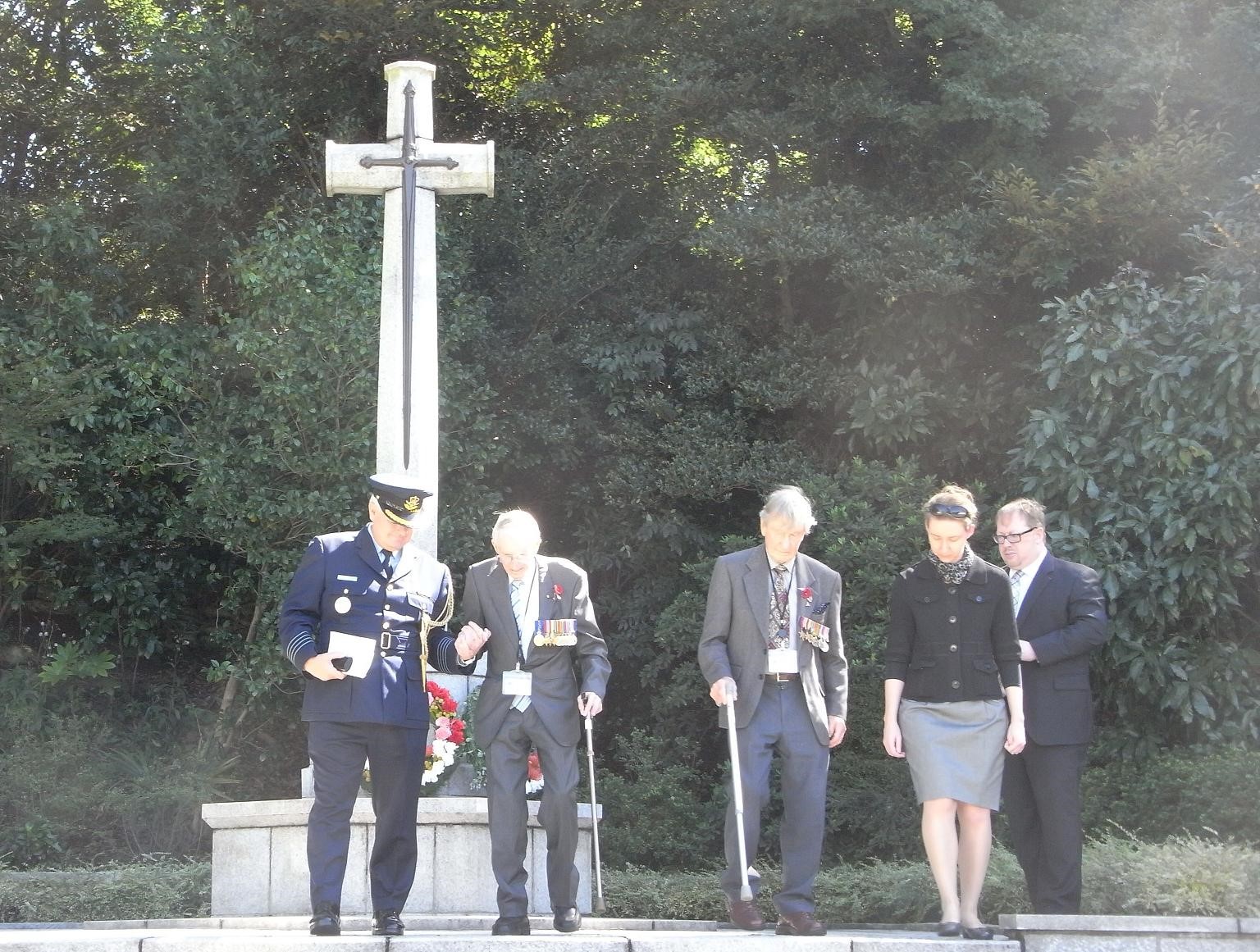 |
|
October 4 (Thurs) afternoon:
Friendship Meeting with Japanese citizens in Tokyo
>>For details, please look here
Place: Tokyo Azabudai Seminar House of Osaka University of Economics & Law
Organized by Japanese Society for Friendship with ex-POWs and Families
Cooperated by POW Research Network Japan (POWRNJ)
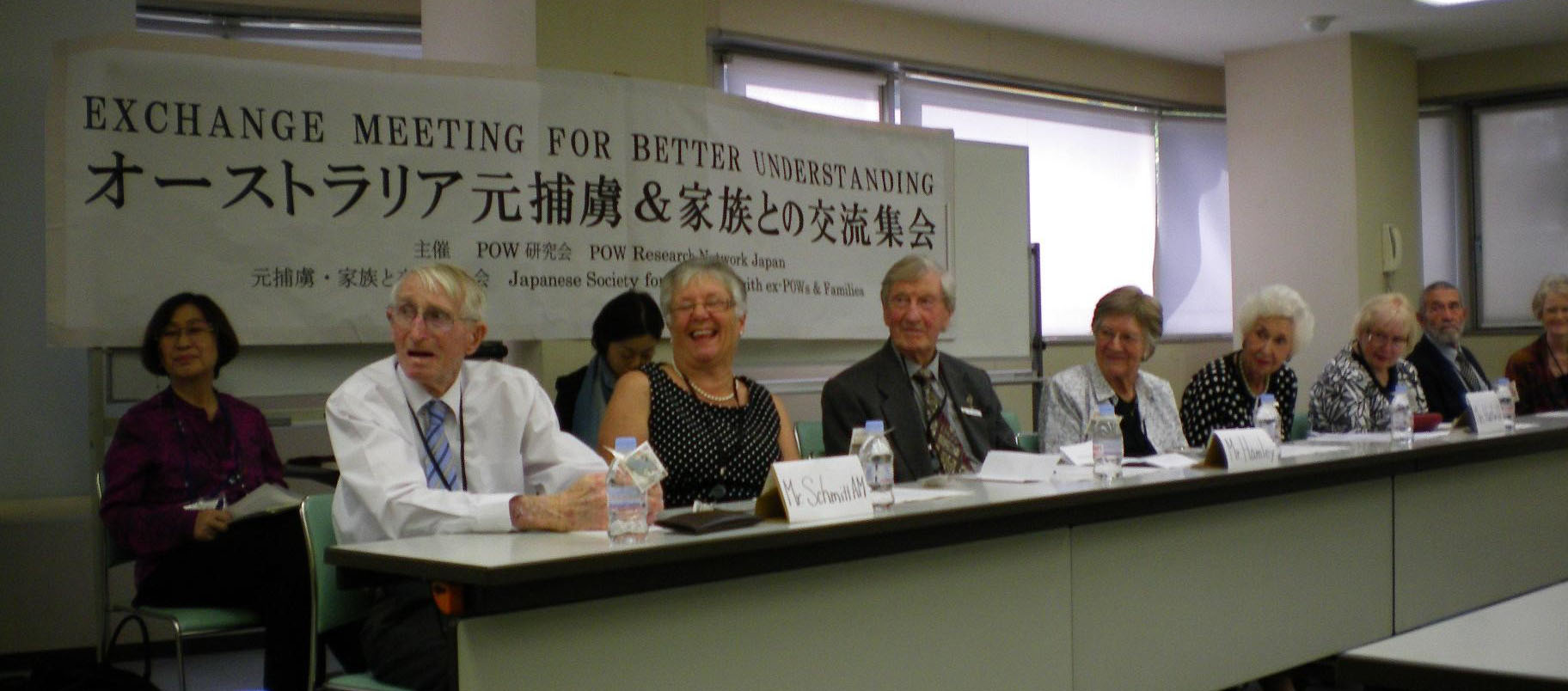
|
October 5 (Fri) and 6 (Sat): Individual visits
Mr. Schmitt and his daughter went to see Mt Fuji on sightseeing. Mr. Hamley, Ms. Hatfield, Mr. Begley and their families went to Hiroshima and Okayama, and fostered friendship with local people, primary school students and university students.
October 5: Visit to Hiroshima
Visit to Noboricho Elementary School in Hiroshima
Noboricho Elementary School in Hiroshima is the alma mater of Ms. Sadako Sasaki, who died of leukemia caused by the A-Bomb at the age of 12.
About 500 pupils gathered at the gym and welcomed the group with the music of Waltzing Matilda, the "national anthem" of Australia. The principal said, "The guests had bitter experiences during the war. So were Hiroshima citizens. A lot of pupils of this school died too. It would be great that the today's exchange help peace take root in our hearts. "After that, Mr. Hamley, Ms. Hatfield and Mr. Begley talked their experiences. Then, two pupils in the sixth grade made a speech in both Japanese and English, and the second graders gave leis with origami cranes to the guests. At the end, they sang together "Orizuru no tobu hi" ("One day when the origami crane flies away") and saw off the group with Waltzing Matilda. The guests were very impressed and shed tears.
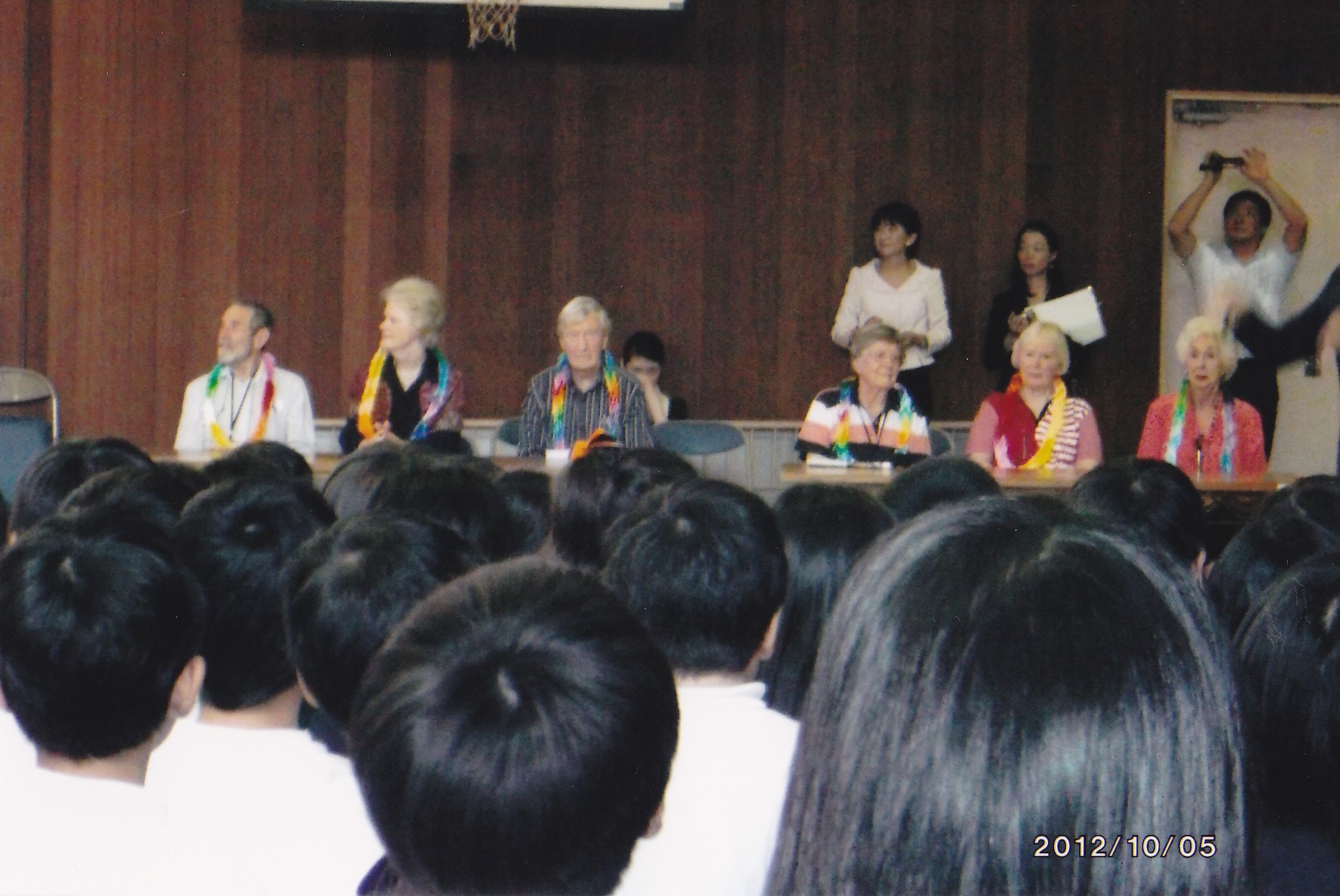 |
Visit to the memorial for the American ex-POWs who died of the A-bomb
When the atomic bomb was dropped, twelve American crews, who was shot down in Chugoku area, had been interned at the Chugoku Military Police Headquarters. It was 400 meters away from the epicenter and all of them died.
Mr. Shigeaki Mori, who is also an A-bomb victim, found out the names of the twelve crews and the bereaved families after a careful research. He registered their portraits on the Hiroshima National Peace Memorial Hall for the Atomic Bomb Victims and built the memorial at the site of Kenpeitai headquarters. Mr. Mori showed them around the memorial.
The memorial is inscribed in English "......May this humble memorial be a perpetual reminder of the savagery of war" with photos of devastated Hiroshima and the deceased crews.
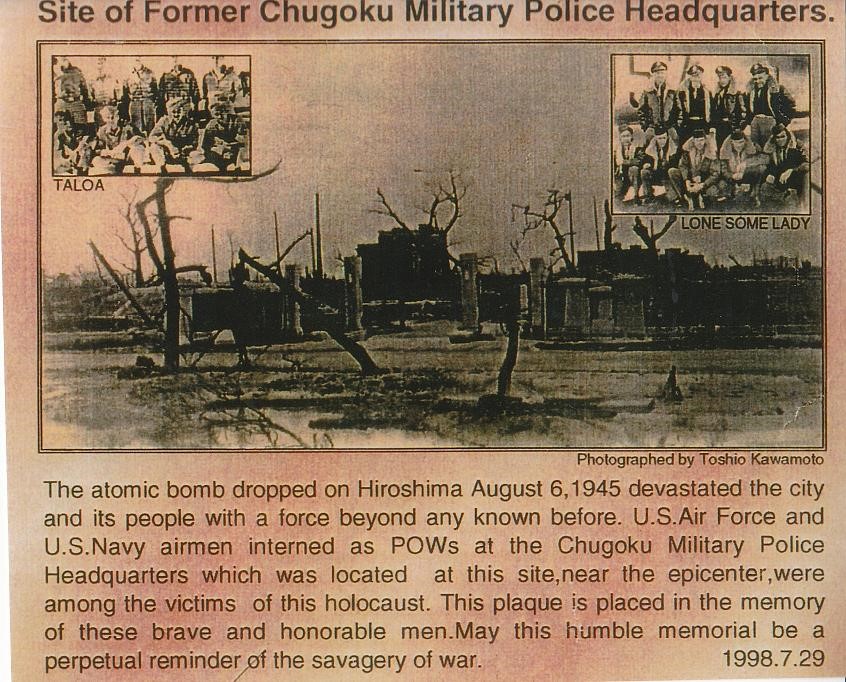 |
One thousand origami cranes from Australia
They visited the Children's Peace Monument, modeled on Ms. Sadako Sasaki, and offered one thousand origami cranes Mr. Begley brought from Australia. Mr. Begley had been impressed by a story of Ms. Sadako and had asked the children in his town to make one thousand origami cranes.
Mr.Mori passed on a message from Ms. Sadako's older brother, Mr. Masahiro Sasaki, "......You went through terrible experiences. We shouldn't let it happen again. We have to bear this in mind and keep telling this to the next generation......."
They visited Hiroshima Peace Memorial, laid flowers at the Memorial Cenotaph and went around the Hiroshima Peace Memorial Museum. They seemed to be shocked by the movies and the exhibitions there.
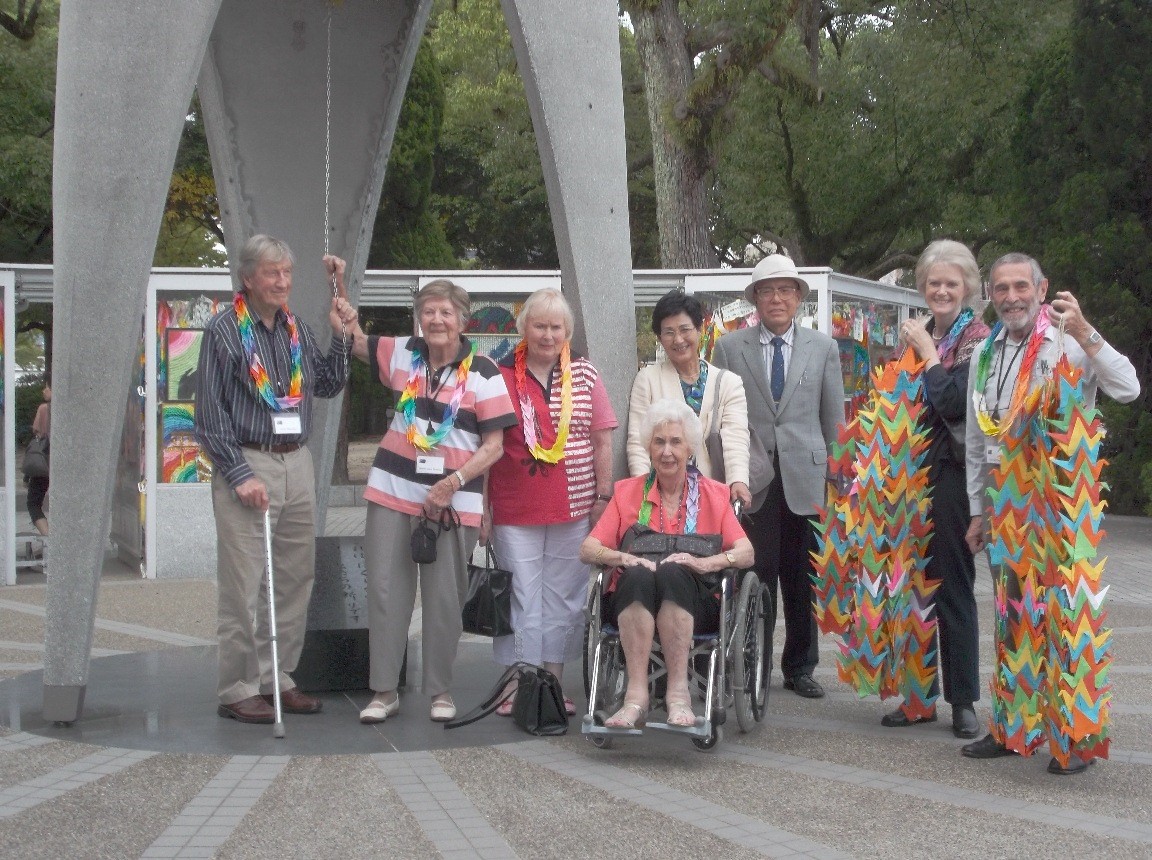 |
October 6 (Sat): Visit to Okayama
Visit to Okayama University
Mr. Hamley, Ms. Hatfield and Mr. Begley talked their experiences, with an associate professor Tomoyo Nakao as a host. Mr. Hamley said "I had hated Japan for long time and I wouldn't have listened to a story of my comrade's visit to Japan. However, this visit made me listen to it finally." Ms. Hatfield said "When I was stationed in Hiroshima and saw the devastated city, I was very shocked. Now, Hiroshima became a beautiful town and Japan changed into a country that respects peace." Mr. Begley suddenly stood up and screamed "Kyotsuke! (Stand up!) Bango, Ichi, Ni, San ......Jyu! (No.1,2,3......10!)". This is what he learnt at the camp and it made students surprised. Students and local people asked them many questions and the meeting was filled with excitement. Finally, the male choir of the University sang "Sukiyaki" and saw them off while a female student was playing Auld Lang Syne on the clarinet.
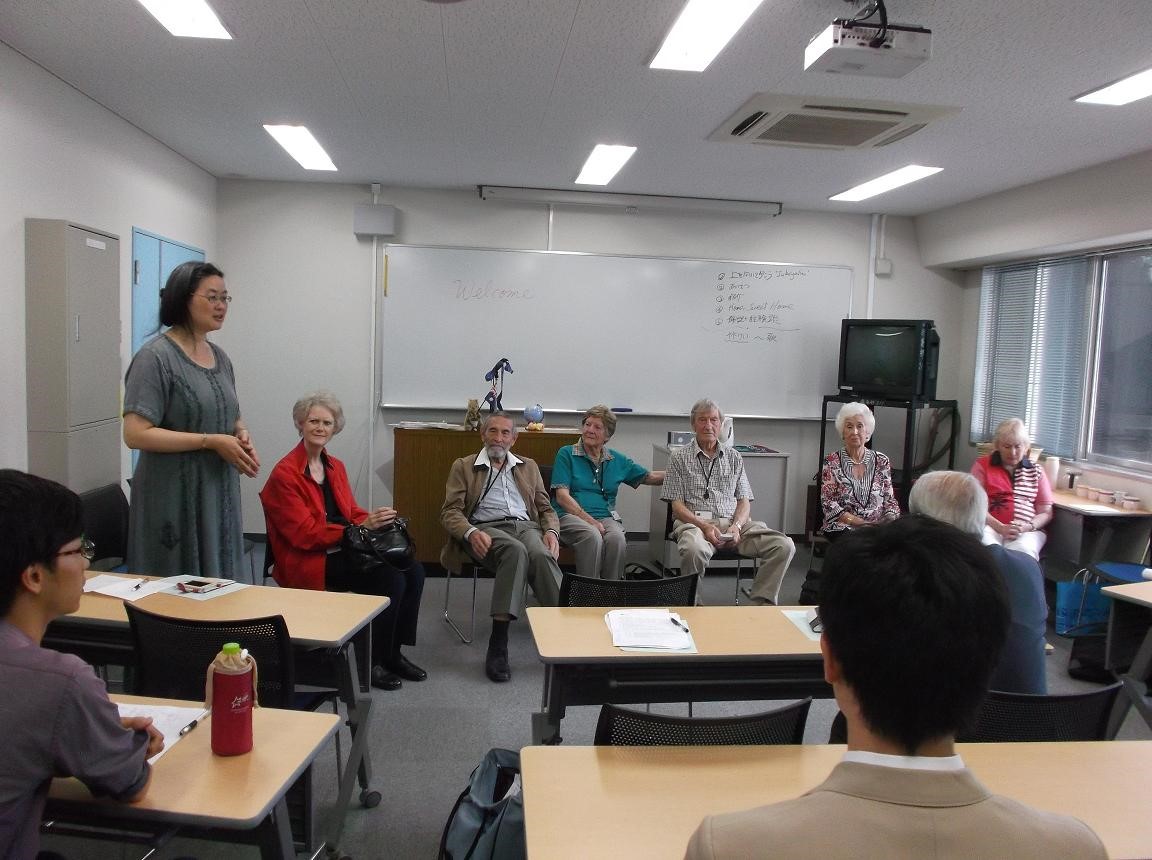 |
October 7 (Sun): Visit to Ryozen Kannon Temple
They visited Ryozen Kannon Temple in Higasiyama ward, Kyoto city. It has been keeping rosters and individual cards of the all Allied POWs and civilian internees held by the Japanese during World War 2 (about 48,000 people). The rosters and individual cards are stored by nationalities, in alphabetical order. They found names of their families and friends, and remembered the fallen comrades.
After that they went sightseeing in Kyoto such as Sanjusangendo.
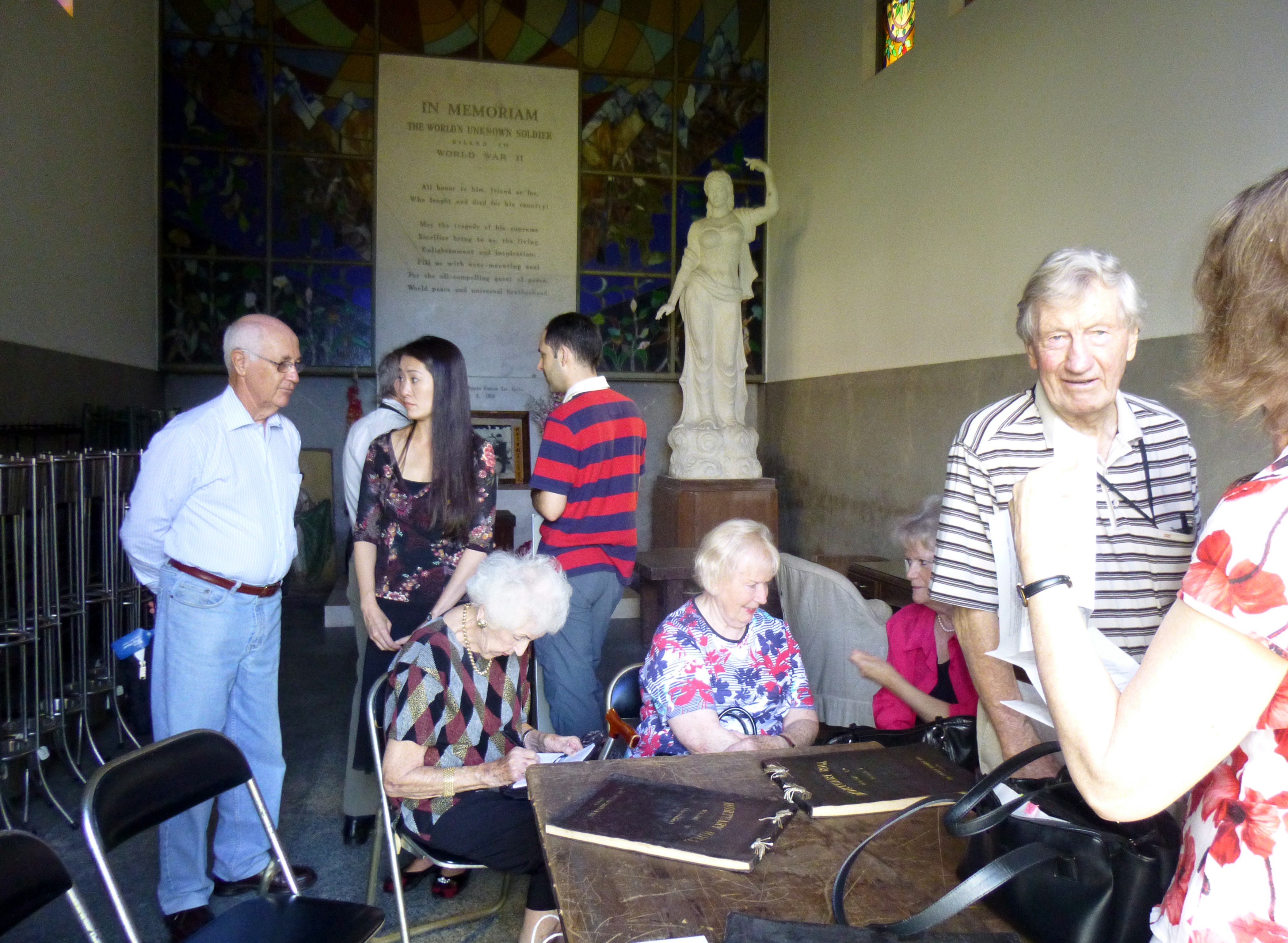 |
 |